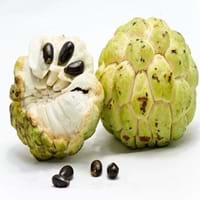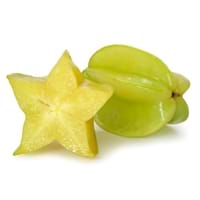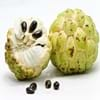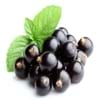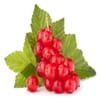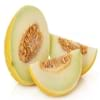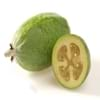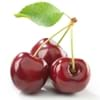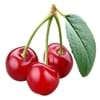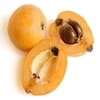Health Benefits
Cancer prevention, Heart care, Regulation of heart rate
Cancer prevention, Heat stroke treatment
General Benefits
Anti oxidant properties, Anti-inflammatory properties, Boosts immune system, Controls blood pressure, Digestive aid, Strengthens bones
Anti oxidant properties, Anti-inflammatory properties, Digestive aid, Maintains healthy cholesterol level, Treatment of sore eyes
Skin Benefits
Reduces wrinkles, Skin rejuvenation
Anti-aging benefits, Heals sunburn, Skin rejuvenation
Hair Benefits
Promotes longer and healthier hair, Treatment of dandruff, Treatment of Lice
Promotes longer and healthier hair, Protects hair
Allergy Symptoms
Anaphylaxis, Itching, Skin rash, Swelling of face
NA
Side Effects
Allergic reaction, Possibly unsafe during pregnancy
Nausea, Vomiting
Best Time to Eat
As a snack in the late afternoon, Don't consume at night and before bed, Morning time (before lunch)
As a snack in the late afternoon, Eat the fresh ones, avoid mixing with any other foods, don't eat after meal., Strictly avoid empty stomach
Vitamin A (Retinol)
Not Available
Vitamin B5 (Pantothenic Acid)
Vitamin C (Ascorbic Acid)
Vitamin K (Phyllochinone)
Not Available
Calories in Fresh Fruit with Peel
Not Available
Calories in Fresh Fruit without Peel
Not Available
Calories in Frozen Form
Not Available
Not Available
Calories in Dried Form
Not Available
Calories in Canned Form
Not Available
Not Available
Calories in Juice
Not Available
Season
Autumn, Spring, Winter
Autumn, Spring, Summer
Varieties
Andrews, Amarilla, Asca, Baste, Bays, Bayott, Behl, Canaria, Capucha, Deliciosa, Ecuador, El Bumpo, Guayacuyán, Jete, Juniana, Knight, Nata, Popocay, Sander, Smoothey, Tumba, Umbonada, Whaley and White Juliana
King, Bell, Sri Kembangan, Arkin and Fwang Tung
Color
Green, Yellow
Golden yellow, Green
Inside Color
White
Yellowish Green
Shape
Conical
Oval and Star(Cross section)
Taste
Sweet
Crisp, Juicy, Sweet
Grows on
Trees
Not Available
Soil Type
Sandy loam
Loam, Well-drained
Climatic Conditions
Warm
Moist, Warm to hot climate
Facts about
- Cherimoya is also called as custard apple or chirimoya.
- The word cherimoya came from the Quechua word,'chirimuya',which means 'cold seeds'.
- The cherimoya is called as 'the tree of ice cream'.
- When carambola is cut horizontally, it forms a star.
- It is believed that carambola helps to cure hangover.
- Entire carambola is edible, including its skin.
- 2 varieties of carambola are cultivated: tart & sweet.
Top Producer
Spain
Taiwan
Other Countries
Argentina, Chile, Colombia, Egypt, Italy, Mexico, Peru, South Africa, United States of America
Australia, Guyana, India, Israel, Malaysia, Philippines, United States of America
Top Importer
United States of America
Europe
Top Exporter
Spain
Malaysia
Botanical Name
Annona cherimola
Averrhoa carambola
Synonym
Not Available
Not Available
Subkingdom
Tracheobionta
Tracheobionta
Division
Magnoliophyta
Magnoliophyta
Class
Magnoliopsida
Magnoliopsida
Subclass
Magnollidae
Rosidae
Order
Magnoliales
Oxalidales
Family
Annonaceae
Oxalidaceae
Species
A. cherimola
A. carambola
Generic Group
Not Available
Not Available
Difference Between Cherimoya and Carambola
We might think that Cherimoya and Carambola are similar with respect to nutritional value and health benefits. But the nutrient content of both fruits is different. Cherimoya and Carambola Facts such as their taste, shape, color, and size are also distinct. The difference between Cherimoya and Carambola is explained here.
The amount of calories in 100 gm of fresh Cherimoya and Carambola with peel is Not Available and 31.00 kcal and the amount of calories without peel is 75.00 kcal and Not Available respectively. Thus, Cherimoya and Carambola belong to Low Calorie Fruits and Low Calorie Fruits category.These fruits might or might not differ with respect to their scientific classification. The order of Cherimoya and Carambola is Magnoliales and Oxalidales respectively. Cherimoya belongs to Annonaceae family and Carambola belongs to Oxalidaceae family. Cherimoya belongs to Annona genus of A. cherimola species and Carambola belongs to Averrhoa genus of A. carambola species. Beings plants, both fruits belong to Plantae Kingdom.
